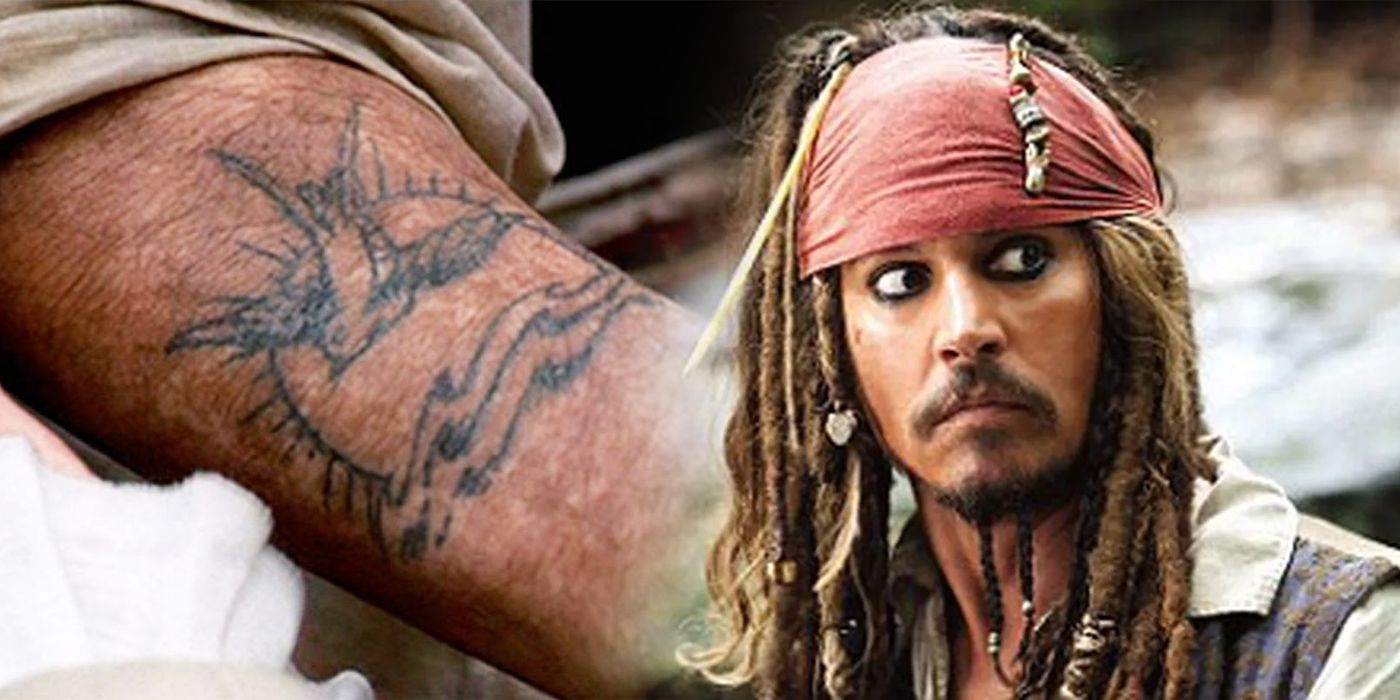The Pirates of the Caribbean franchise put a lot of work into subtle background details, but one vital element of Jack Sparrow’s tattoos makes no sense when looked at closely. Released in 2003, the first Pirates of the Caribbean movie The Curse of the Black Pearl was a huge hit with both audiences and critics alike thanks to its quick-witted script, spooky sea-set horror elements, and fast-paced swashbuckling action.
The subsequent Pirates of the Caribbean sequels failed to recapture the fleet-footed humor and action of the original, becoming bogged down in the minutiae of real-life nautical mythology and the complex lore of the franchise. One element the original was beloved for was its clever focus on small details — although some small parts of the series still don’t add up upon further inspection.
Take, for example, Jack’s tattoos. Much like gang members, bikers, and many other subcultures, pirates had all manner of symbolic significance attached to specific tattoos, and many of Jack’s carry a traditional meaning — not all of which make sense on close inspection. For example, in nautical ink terminology (and for pirates in particular) the swallow tattoo that Jack boasts means a long distance covered (5000 nautical miles for pirates), and also implies the promised safety of reaching home. But the problem with this symbol is that much to the chagrin of Cutler Beckett and company, Jack Sparrow's home is the sea. He wouldn't celebrate a return to dry land the way that many of his crew members would because he makes a point of having no home country, city, or town.
In terms of distance covered in his pirating career, there’s no doubt that Jack can boast the achievement attached to the tattoo by the time viewers meet him in the first Pirates of the Caribbean movie. However, his character nonetheless doesn't fit the "safe route home" sentiment of the tat at all. Jack hates dry land and considers most of the world’s countries to be larger versions of the desert island he ends up stranded on in The Curse of the Black Pearl, meaning he’d hardly care about returning safely to the shore when the sea is his home. Of course, this isn’t the only Jack Sparrow tattoo with meaning that's been complicated.
The simple “Jack” tattoo painted on Johnny Depp’s arm was originally a fake piece of body art that was intended to be part of Jack Sparrow’s costume. However, Depp loved the tattoo so much that he later had it done for real (with the real deal also being in honor of his real-life son Jack, born a year before the first Pirates of the Caribbean arrived in theatres). Ironically, much of the makeup used on Depp was actually in service of covering up his real tattoos, which would have looked anachronistic on the character, as well as adding more period-appropriate fake body art for his Pirates of the Caribbean character.


